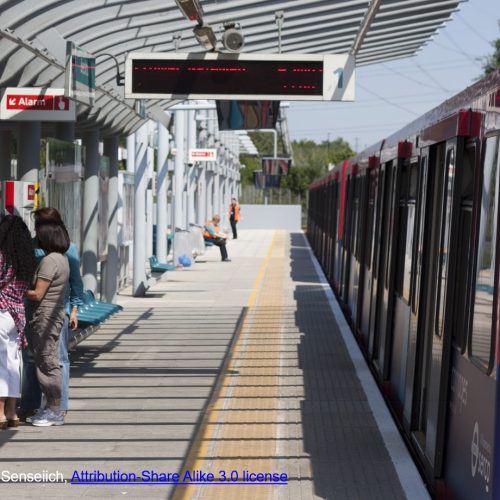
Smart sequencing has been the key to success for Octavius’ Docklands Light Railway (DLR) lift renewal programme. Throughout the work the focus has been on passenger experience, ensuring step-free access was always available, on all routes, for the mass transit system’s users.
Achieving this required developing a detailed understanding of the network which encompassed the configuration of each station and their lift provisions, as well as the individual routes and system as a whole. Also key was maintaining a comprehensive knowledge of all other renewals, as well as planned and reactive maintenance work, being undertaken across the light railway.
Managed by Transport for London (TFL), the DLR opened in 1987 to support the regeneration of London’s post-industrial docklands. From the outset all stations were step-free, making the lifts on the original routes due for renewal.
Octavius was awarded the £7 million renewals programme under TFL’s London Rail Infrastructure Improvement Framework. The work currently covers 19 stations, with multiple lifts, which equates to renewing half of the mass transit system’s lift estate.
Scope covers both renewals and scheduled maintenance inspections of all lift infrastructure except the car. While the original lift fleet comprised both machine roomless (MRL) and hydraulic lifts, the renewals programme required the new fleet to be MRL only. Octavius developed the replacement design to TFL’s specification, drawing upon the company’s extensive experience delivering Network Rail’s Access for All programme.
Where possible the work is delivered by nimble two-person teams, to minimise the programme’s presence on a network that carries close to one million passengers every year. Reviewing the programme Octavius identified multiple opportunities to increase efficiency, for instance ensuring where possible that all the renewals at a single station were carried out as a single project, removing the need to work on the same location more than once.
The team also looked for opportunities to use station design to their advantage. For example, West Ham and Canning Town stations serve both the DLR and Jubilee underground line, with island platforms for the DLR sitting above those for the Jubilee Line. The team phased the renewals at these stations in a manner that maintained step-free access by ensuring at least one of either the Underground or the DLR lifts could be used to access DLR platforms at any time.
In addition to the DLR lift renewals, Octavius’ role on TFL’s London Rail Infrastructure Improvement Framework has encompassed drainage projects on the tram network in south London and rail bridge repairs at locations across the capital.
Image credit: Senseiich, Attribution-Share Alike 3.0 license